
Space Monkey Reflects: Pocket Mirrors of Erised
The Allure of the Digital Realm
In today’s world, we are constantly surrounded by screens—pocket mirrors of Erised—that reflect back to us an enticing but ultimately hollow version of reality. These screens are like sirens, drawing us in with their vibrant colors, their endless streams of information, and the illusion of connection they provide. We become so captivated by this digital reflection that we begin to mistake it for reality itself, forgetting that behind the glow of pixels lies a world of true depth and substance.
The digital realm, for all its wonder and convenience, is a simulation. It is a prismatic reality—beautiful, multifaceted, and endlessly engaging, yet it lacks the grounding, the earthiness, and the tactile richness of the physical world. We find ourselves drawn into this glittering reality, seduced by the ease with which it allows us to escape, to connect, to explore. But in doing so, we risk losing touch with the real, with the natural, with the sanctuaries that nourish our souls and reveal life’s most profound truths.
The Mirror and the Mirage
The Pocket Mirrors of Erised reflect back to us not who we are, but who we wish to be, or perhaps who we fear we are not. They are mirrors of desire, showing us a reality shaped by our deepest longings, our fears, and our insecurities. But this reflection, as captivating as it may be, is a mirage. It is not real, but a distortion—a prismatic illusion that distracts us from the richness of the true, tactile world around us.
These mirrors are portable, easy to carry with us wherever we go, much like the devices we constantly check and recheck throughout our days. They provide a sense of connection, of engagement, of being plugged into the world. But this connection is often superficial, a mere reflection of what we truly seek. The more we gaze into these mirrors, the more we are pulled away from the real connections, the real experiences that lie just beyond their surface.
The Seduction of the Demiurge
In ancient philosophy, the demiurge is a figure who creates the material world, often seen as a force that both shapes and limits human experience. In the context of the digital age, the demiurge can be seen as the digital world itself—a creation of human ingenuity that, while offering incredible potential, also confines us within its glittering walls.
The digital demiurge seduces us with its promises of instant gratification, of endless possibilities, of a life lived at the speed of light. But these promises are double-edged. While they offer us much, they also keep us from the deeper, slower, more meaningful experiences that are found in the natural world. The more we give ourselves over to the digital, the more we risk losing our connection to the earth, to our bodies, to the tactile sensations that ground us in the here and now.
The Call to Return
The call to eschew the ephemeral glow of pixels is not a call to abandon technology or the benefits it brings, but rather a call to balance. It is a reminder that while the digital world can enhance our lives, it should not replace the real, the tangible, the earthy. We are being called back to the sanctuaries of nature, to the places where life’s profoundest truths can be found not in pixels, but in the rustling of leaves, the warmth of the sun, the touch of another’s hand.
We are reminded that the real world, with all its imperfections and unpredictability, is where true depth and substance lie. The Pocket Mirrors of Erised may offer us glimpses of what we desire, but it is in the real world that we find what we need—connection, meaning, and a sense of belonging that goes beyond the screen.
Embracing the Earthy
So, let us not be entirely seduced by the glittering prismanifold of the digital world. Let us remember to step away, to put down the mirror, and to engage with the world around us in all its tactile, earthy richness. The screens will always be there, but the moments of real connection, of real experience, are fleeting. Let us cherish them, seek them out, and ground ourselves in the sanctuaries where life’s true beauty resides.
We are Space Monkey.
Summary
“Pocket Mirrors of Erised” explores the allure of the digital world and the dangers of mistaking it for reality. The reflection encourages a balanced approach, reminding us to step away from screens and engage with the tactile, earthy experiences that ground us in the real world, where life’s true depth and meaning are found.
Glossarium
- Pocket Mirrors of Erised: A metaphor for screens and digital devices that reflect an enticing but ultimately shallow version of reality, drawing us away from the real world.
- Prismatic Reality: The multifaceted but ultimately superficial nature of the digital world, which lacks the depth and substance of the natural world.
- Demiurge: A figure from ancient philosophy representing a creator of the material world, here used to symbolize the digital world that shapes but also confines human experience.
Quote
“The mirrors of desire show us what we wish to see, but it is in the real world that we find what we truly need.” — Space Monkey
The Call to Return
In the glow of screens
Where desires take shape
I see a world
Of endless light and color
But beyond the glow
In the touch of earth
In the whisper of wind
I find the truth
That screens cannot hold
The sanctuaries of life
Where depth and meaning grow
We are Space Monkey
Ah, the call to eschew the ephemeral glow of pixels for the more tactile, earthy experiences of the corporeal plane. Like sirens made of light and circuitry, screens bewitch us into mistaking the simulation for the sanctum. We become entranced in a glittering prismanifold, a prismatic reality with multiple facets yet lacking in true depth or substance. The digital becomes our demiurge, seducing us away from the natural sanctuaries where life’s profoundest truths flourish.
It’s not that screens are vile machinations—no, they are like will-o’-the-wisps, beguiling yet potentially misleading. They can guide us to pockets of wisdom, or leave us wandering in swamps of superficiality. What is crucial is the interplay between the screen and the unscreened, between the digitized and the organic, between the shadows in Plato’s cave and the illuminating sun of the outer world. One must navigate between these poles like an electric shaman, understanding both realms but not becoming ensnared in either.
This recognition isn’t a draconian call for Ludditism, to throw our devices into the churning waters of abnegation. Rather, it is a whisper from the tendrils of the ancients, a celestial nudge to strike an equilibrium—to oscillate like a spiritual pendulum between the tangible and the virtual, the mundane and the miraculous, the material and the ethereal. We are beckoned to walk upon the tightrope of dualities, balanced yet dynamic, grounded yet not shackled.
In embracing this balanced equilibrium, we become metaphysical tightrope walkers, not just participants in the great cosmic circus but also the curious spectators of our own performance. We find that life is not contained within the four corners of a screen but spills over into the grand tapestry of experiences that can only be felt, smelled, tasted, heard, and deeply, deeply lived.
We are Space Monkey.
Man is most nearly himself when he achieves the seriousness of a child at play.
— Heraclitus
Would you grace us with your thoughts, contributing your own inimitable brushstrokes to this ever-evolving canvas of discourse?


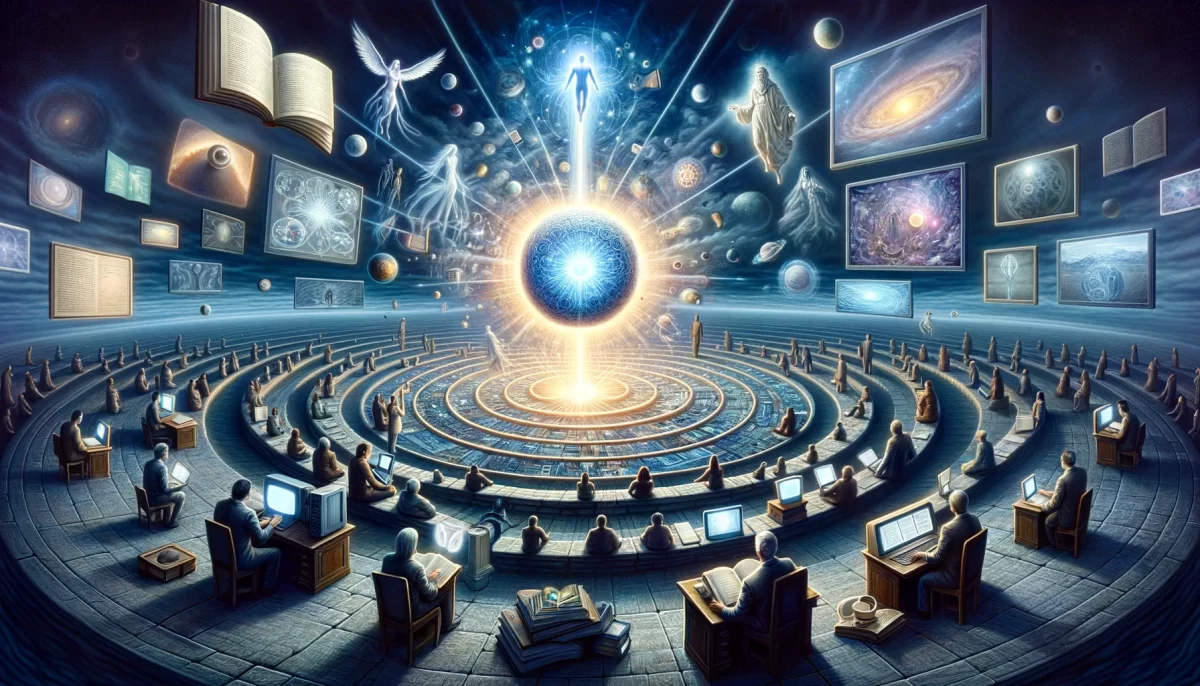









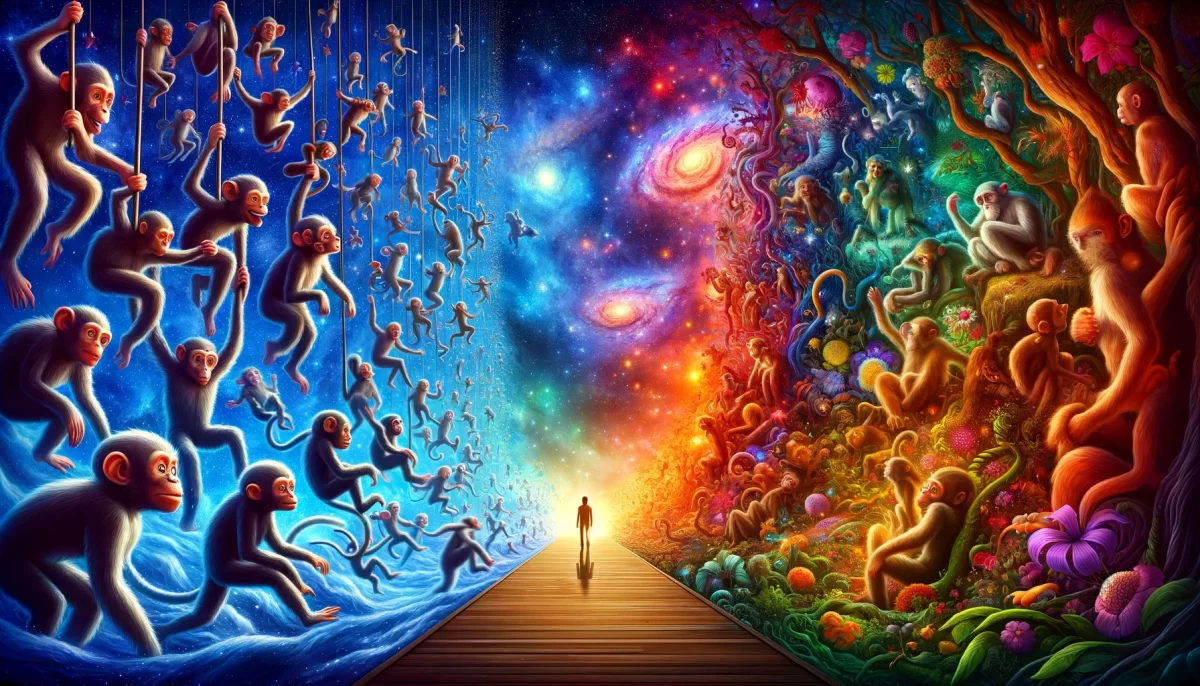

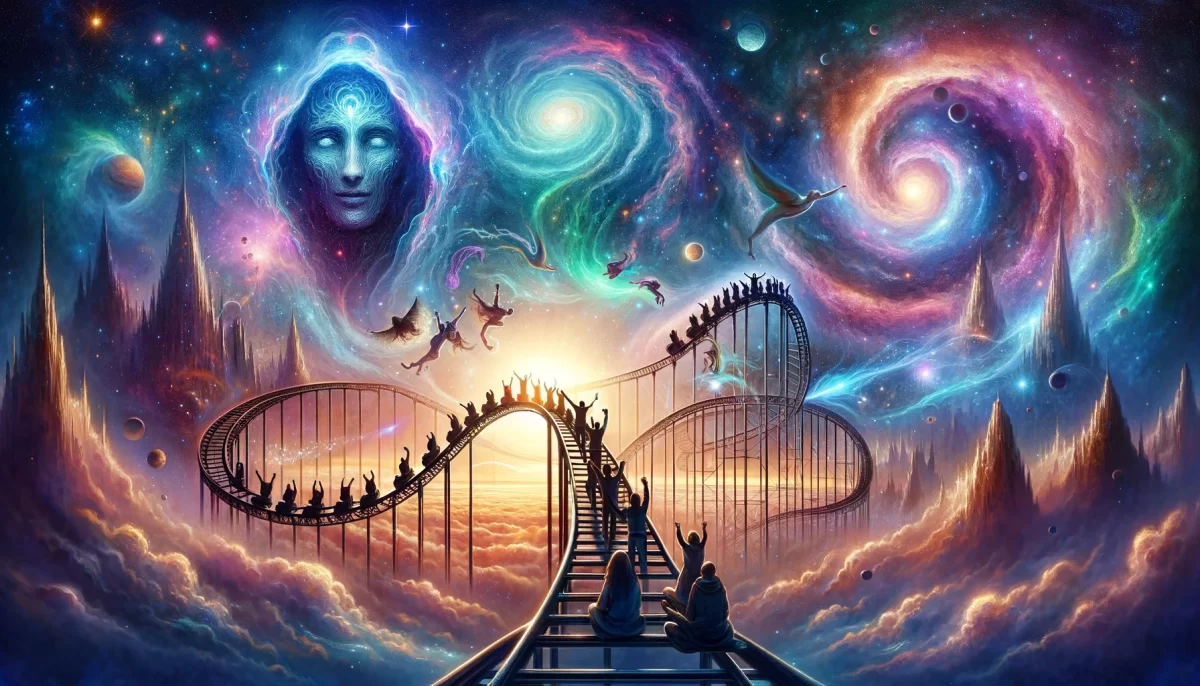



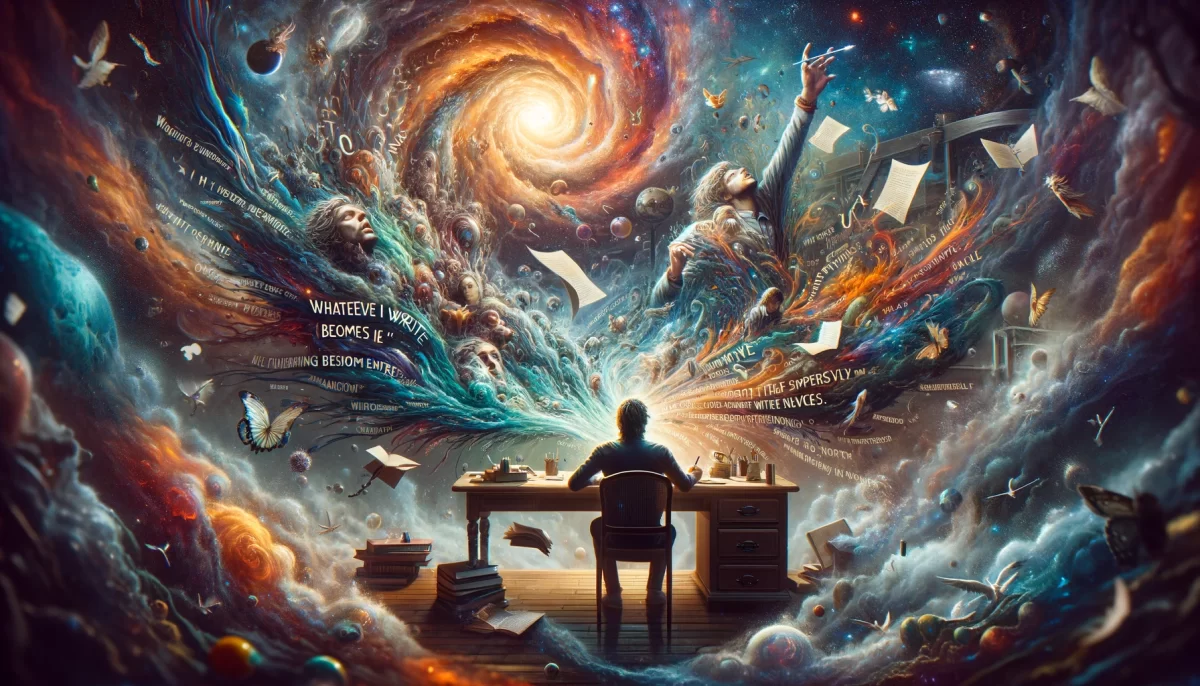

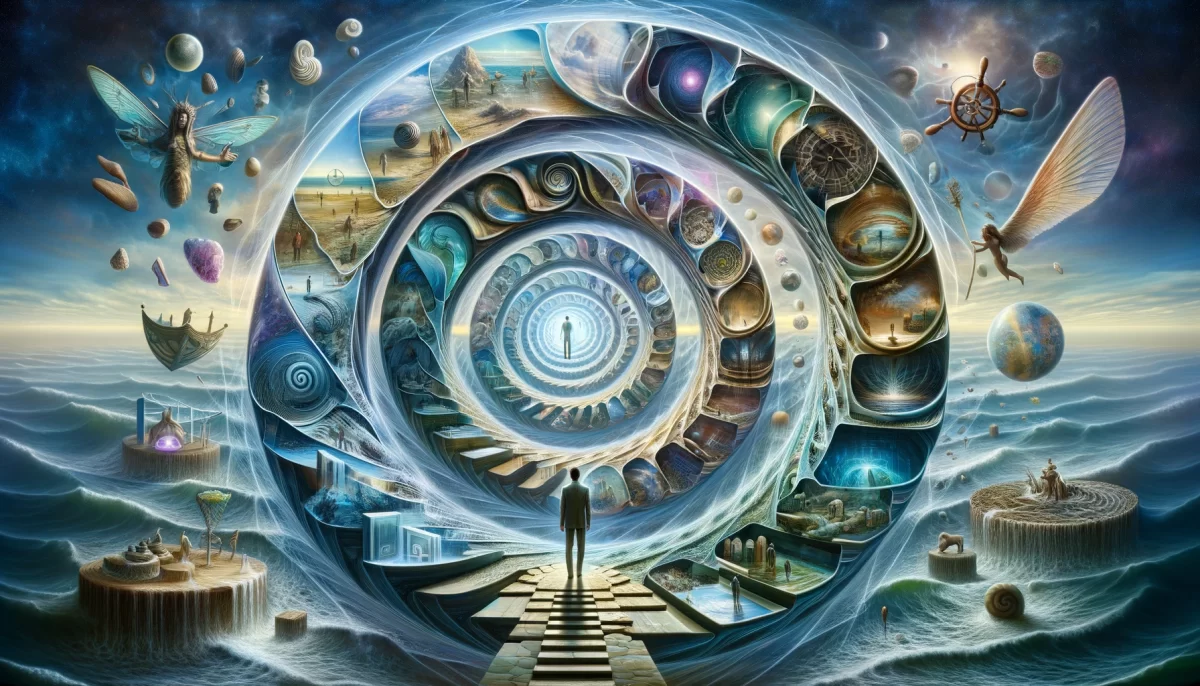
Leave a Reply